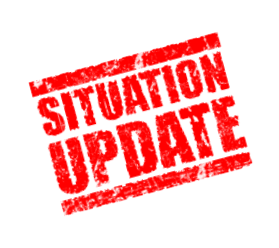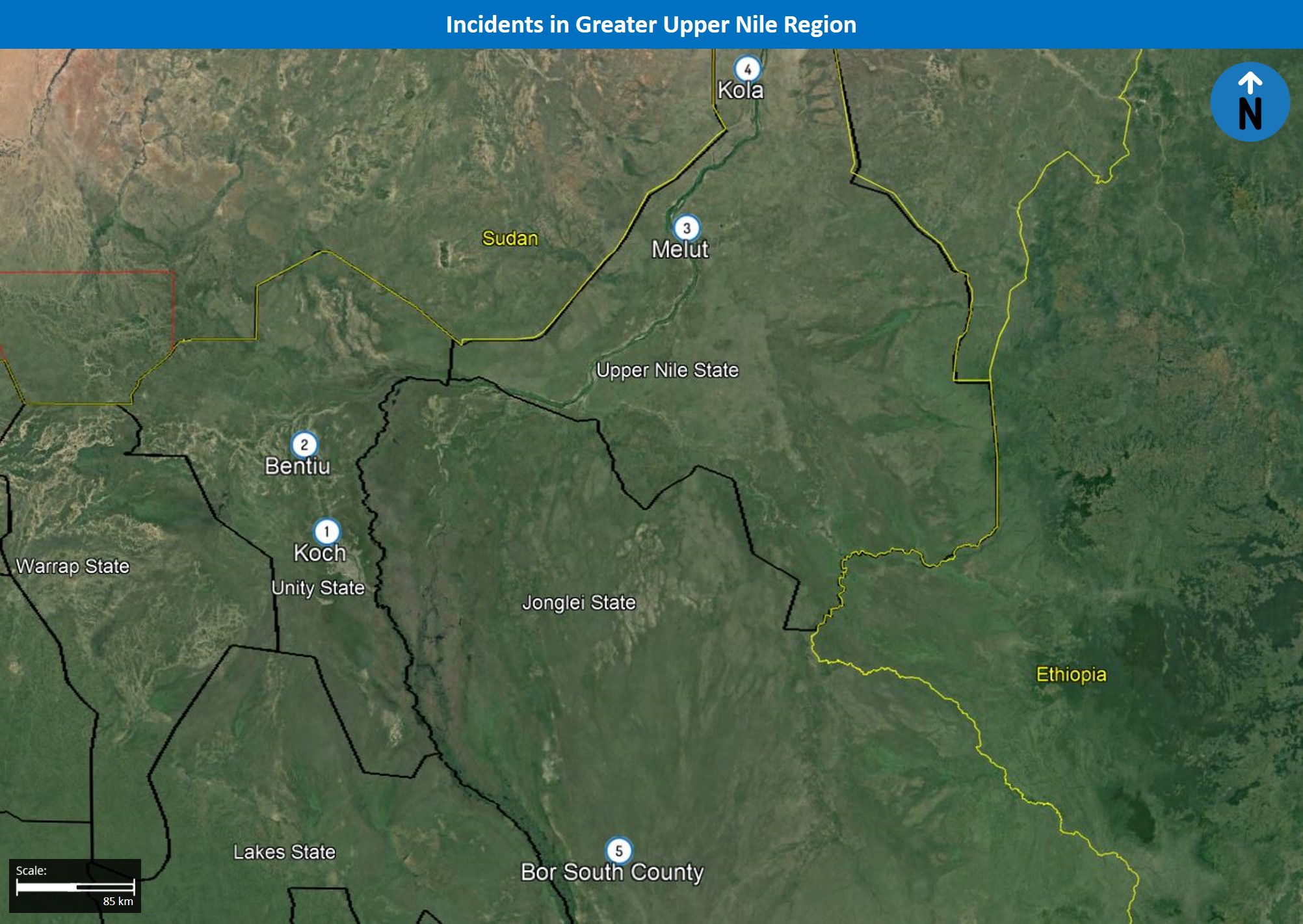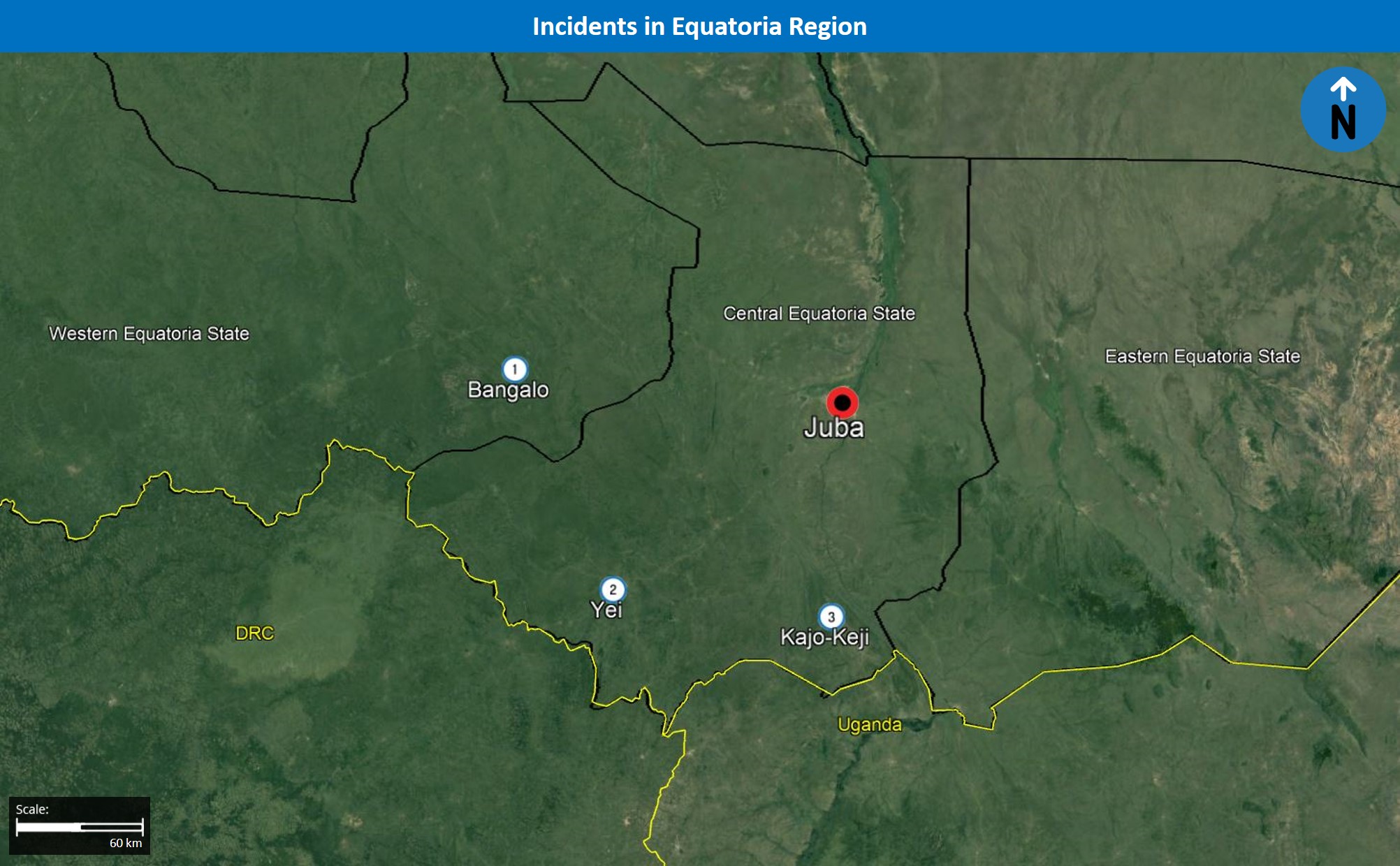27
Dec 2017
6:08 UTC
South Sudan SITUATION UPDATE: Government, rebels sign cessation of hostilities agreement, violated hours after it goes into effect on December 24
Executive Summary
- The cessation of hostilities agreements that was signed on December 21 is the eighth agreement to speak of ending hostilities since the civil war began and, as much of the war has been fought under the auspices of a ceasefire, it was expected that it would be violated.
- In the absence of verification, deterrence, and other accountability mechanisms, the ceasefire will have limited effect on the belligerent parties’ behavior, and clashes are likely to continue in Equatoria, Unity State, and Western Bahr el Ghazal over the coming days and weeks.
- As peace talks are slated to go forward in February, they remain in doubt given the wide gap between the government and rebels’ stance over whether the peace agreement signed in August 2015 should be revised. Given this, and the ceasefire violations, there is a high risk that the talks will collapse.
Incidents in Juba
| District | Target | Date | Brief Description | |
| 1 | Gudele | Civilians | December 18 | Four people killed in Gudele Central Market during land dispute |
| 2 | Nyakuron West | Civilians | December 20 | Franciscan missionaries at Holy Trinity Parish robbed, two individuals wounded during attack. |
| 3 | Jebel | IDPs | December 22 | Residents of Juba PoC site hold peaceful demonstration in support of ceasefire agreement. |
| 4 | Hai Mouna | Civilians | December 26 | Three children wounded due to detonation of unexploded ordnance (UXO) near graveyard in Custom area. |
Incidents in Bahr el Ghazal Region
| State | County | Locale | Date | Brief Description | |
| 1 | Northern Bahr el Ghazal | Aweil Center | Lukluk | December 25 | SPLA accuses SPLA-IO of attacking government positions. |
| 2 | Western Bahr el Ghazal | Raja | Raja | December 21 | Government accuses SPLA-IO of ambushing SPLA convoy in Omboro area. |
| 3 | Western Bahr el Ghazal | Wau | Wau | December 22 | Clashes between SPLA and SPLA-IO in Jalaba area. |
| Western Bahr el Ghazal | Wau | Wau | December 24 | Clashes between SPLA and SPLA-IO in Jebel Rabay area. | |
| 4 | Lakes | Rumbek Center | December 25 | At least four people killed, several injured in cattle raid that led to clashes between Rup, Kuei communities. |
Incidents in Greater Upper Nile Region
| State | County | Locale | Date | Brief Description | |
| 1 | Unity | Koch | Koch | December 24 | At least 27 SPLA-IO rebels, nine civilians, six SPLA soldiers killed during clashes between SPLA with SPLA-IO. |
| 2 | Unity | Rubkona | Bentiu | December 25 | Residents of Bentiu PoC site hold demonstration in support of ceasefire agreement. |
| 3 | Upper Nile | Melut | Melut | December 20 | UN announces closure of PoC site. |
| 4 | Upper Nile | Fashoda | Kola | December 22 | Clashes continue between SPLA and Aguelek Force. |
| 5 | Jonglei | Bor South | Chueikeer | December 22 | At least 23 people killed, 18 wounded in intercommunal clashes between Dinka sections over grazing lands. |
Incidents in Equatoria Region
| State | County | Locale | Date | Brief Description | |
| 1 | Western Equatoria | Mudri West | Bangalo | December 23 | SPLA-IO general and two bodyguards killed during clashes with SPLA. |
| 2 | Central Equatoria | Yei | Yei | December 24 | SPLA and SPLA-IO exchange artillery fire. |
| 3 | Central Equatoria | Kajo Keji | Kajo Keji | December 25 | SPLA accuses SPLA-IO of attacking military base in Kansuk. |
Notable Developments
- On December 21, the South Sudanese government and a number of opposition groups signed a cessation of hostilities agreement during the High-Level Revitalization Forum organized by the Intergovernmental Authority on Development (IGAD) East Africa bloc in Addis Ababa, Ethiopia. Signatories include the Sudan People’s Liberation Movement – In Opposition (SPLM-IO) under rebel leader Riek Machar, the National Salvation Front (NAS) led by Thomas Cirillo, and several others.
- The agreement mandated that a ceasefire take effect at 00:01 (local time) on December 24, and that all parties respect international humanitarian law and allow the full access of humanitarian aid. There were further provisions regarding the release of political prisoners and the restructuring of the Ceasefire and Transitional Security Arrangements Monitoring Mechanism (CTSAMM) in order to monitor the implementation of the agreement.
- On December 22, ten major opposition parties and rebel groups announced an ‘alliance’ during the revitalization forum, agreeing to coordinate their negotiating positions during the peace talks. They further noted in their statement that they would require a “significant revision” to the Agreement on the Resolution of the Conflict in South Sudan (ARCISS) signed in August 2015, which the current talks are meant to revive.
Assessments & Forecast
- The ceasefire is the eighth agreement in South Sudan to speak of ending hostilities since the first cessation of hostilities agreement was signed in January 2014, approximately six weeks after the civil war began. Thus, most of the ongoing conflict has been fought under the auspices of a temporary or “permanent” ceasefire agreement. As a result, it was inevitable that the ceasefire meant to go into effect on December 24 would be violated sooner rather than later, and the first clashes took place in Unity State approximately six hours after it took effect. This likelihood was further evident given that the agreement itself provided no increased capability to investigate, verify, or deter violations. There was no new ceasefire map and the different parties to the conflict have not declared the location and disposition of their forces across the country to be verified by monitors on the ground. Until this happens, it will be extremely difficult for anyone to appropriately attribute the blame for any ceasefire violations.
- FORECAST: Furthermore, in the absence of true accountability mechanisms and the political will on the part of regional or international actors and observers to enforce penalties on those who violate the agreement, the ceasefire will continue to have little to effect on the belligerents’ behavior over the coming days and weeks. Given that government offensives had already been launched against rebel positions in Western and Central Equatoria states, it is likely that conflict will continue in the Mundri and Lasu areas respectively. The recent spate of violence in Western Bahr el Ghazal, both in Raja and Wau, can continue to result in incidents and small clashes. Finally, with Greater Upper Nile Region representing a perennial location for fighting between the SPLA and SPLA-IO due to its significance to the rebellion, the immediate clashes that took place in Unity State are likely to persist, in Koch as well as the counties surrounding it.
- Even amid the immediate ceasefire violations, the revitalization forum is at the moment still expected to resume. The cessation of hostilities is intended to be a precursor to further negotiations, though their direction remains unclear given that the opposition is committed to reforming and revising the ARCISS signed in Addis Ababa in 2015, which the South Sudanese government opposes. The ‘alliance’ by the opposition groups is one of several statements by the parties over the past half-year in which they’ve pledged to join forces politically, though this has also taken place alongside physical clashes between rebel groups in Equatoria. As a result, their agreement is simply an indication of the rebels having clear mutual interest in opposing the government’s positions. Nonetheless, they are likely to face substantial challenges as the government perceives the status quo of the ARCISS as favorable to them, though in many regards, the ARCISS fell apart after the July 2016 violence in Juba that saw SPLM-IO leader Riek Machar flee the country and the war renew nationwide. With the talks slated to resume in late January or early February, this long period of time between the ceasefire signing and further meetings as well as the wide gap in the negotiating stances highlights the risk of the talks collapsing, especially given the immediate and continued ceasefire violations.
Recommendations
- Those traveling to South Sudan should restrict essential travel to Juba, while maintaining heightened vigilance and adhering to stringent security protocols, given high levels of crime and insecurity.
- We advise against all travel outside of Juba to outlying areas of South Sudan, given the continuing clashes between the armed opposition and pro-government troops throughout the country, as well as repeated instances of inter-communal violence.
COUNTRY RISK LEVEL
High
AFFECTED AREA
Nationwide
INCIDENT RISK LEVEL
Extreme
STRENGTH OF SOURCE
Credible
Executive Summary
- The cessation of hostilities agreements that was signed on December 21 is the eighth agreement to speak of ending hostilities since the civil war began and, as much of the war has been fought under the auspices of a ceasefire, it was expected that it would be violated.
- In the absence of verification, deterrence, and other accountability mechanisms, the ceasefire will have limited effect on the belligerent parties’ behavior, and clashes are likely to continue in Equatoria, Unity State, and Western Bahr el Ghazal over the coming days and weeks.
- As peace talks are slated to go forward in February, they remain in doubt given the wide gap between the government and rebels’ stance over whether the peace agreement signed in August 2015 should be revised. Given this, and the ceasefire violations, there is a high risk that the talks will collapse.
Incidents in Juba
| District | Target | Date | Brief Description | |
| 1 | Gudele | Civilians | December 18 | Four people killed in Gudele Central Market during land dispute |
| 2 | Nyakuron West | Civilians | December 20 | Franciscan missionaries at Holy Trinity Parish robbed, two individuals wounded during attack. |
| 3 | Jebel | IDPs | December 22 | Residents of Juba PoC site hold peaceful demonstration in support of ceasefire agreement. |
| 4 | Hai Mouna | Civilians | December 26 | Three children wounded due to detonation of unexploded ordnance (UXO) near graveyard in Custom area. |
Incidents in Bahr el Ghazal Region
| State | County | Locale | Date | Brief Description | |
| 1 | Northern Bahr el Ghazal | Aweil Center | Lukluk | December 25 | SPLA accuses SPLA-IO of attacking government positions. |
| 2 | Western Bahr el Ghazal | Raja | Raja | December 21 | Government accuses SPLA-IO of ambushing SPLA convoy in Omboro area. |
| 3 | Western Bahr el Ghazal | Wau | Wau | December 22 | Clashes between SPLA and SPLA-IO in Jalaba area. |
| Western Bahr el Ghazal | Wau | Wau | December 24 | Clashes between SPLA and SPLA-IO in Jebel Rabay area. | |
| 4 | Lakes | Rumbek Center | December 25 | At least four people killed, several injured in cattle raid that led to clashes between Rup, Kuei communities. |
Incidents in Greater Upper Nile Region
| State | County | Locale | Date | Brief Description | |
| 1 | Unity | Koch | Koch | December 24 | At least 27 SPLA-IO rebels, nine civilians, six SPLA soldiers killed during clashes between SPLA with SPLA-IO. |
| 2 | Unity | Rubkona | Bentiu | December 25 | Residents of Bentiu PoC site hold demonstration in support of ceasefire agreement. |
| 3 | Upper Nile | Melut | Melut | December 20 | UN announces closure of PoC site. |
| 4 | Upper Nile | Fashoda | Kola | December 22 | Clashes continue between SPLA and Aguelek Force. |
| 5 | Jonglei | Bor South | Chueikeer | December 22 | At least 23 people killed, 18 wounded in intercommunal clashes between Dinka sections over grazing lands. |
Incidents in Equatoria Region
| State | County | Locale | Date | Brief Description | |
| 1 | Western Equatoria | Mudri West | Bangalo | December 23 | SPLA-IO general and two bodyguards killed during clashes with SPLA. |
| 2 | Central Equatoria | Yei | Yei | December 24 | SPLA and SPLA-IO exchange artillery fire. |
| 3 | Central Equatoria | Kajo Keji | Kajo Keji | December 25 | SPLA accuses SPLA-IO of attacking military base in Kansuk. |
Notable Developments
- On December 21, the South Sudanese government and a number of opposition groups signed a cessation of hostilities agreement during the High-Level Revitalization Forum organized by the Intergovernmental Authority on Development (IGAD) East Africa bloc in Addis Ababa, Ethiopia. Signatories include the Sudan People’s Liberation Movement – In Opposition (SPLM-IO) under rebel leader Riek Machar, the National Salvation Front (NAS) led by Thomas Cirillo, and several others.
- The agreement mandated that a ceasefire take effect at 00:01 (local time) on December 24, and that all parties respect international humanitarian law and allow the full access of humanitarian aid. There were further provisions regarding the release of political prisoners and the restructuring of the Ceasefire and Transitional Security Arrangements Monitoring Mechanism (CTSAMM) in order to monitor the implementation of the agreement.
- On December 22, ten major opposition parties and rebel groups announced an ‘alliance’ during the revitalization forum, agreeing to coordinate their negotiating positions during the peace talks. They further noted in their statement that they would require a “significant revision” to the Agreement on the Resolution of the Conflict in South Sudan (ARCISS) signed in August 2015, which the current talks are meant to revive.
Assessments & Forecast
- The ceasefire is the eighth agreement in South Sudan to speak of ending hostilities since the first cessation of hostilities agreement was signed in January 2014, approximately six weeks after the civil war began. Thus, most of the ongoing conflict has been fought under the auspices of a temporary or “permanent” ceasefire agreement. As a result, it was inevitable that the ceasefire meant to go into effect on December 24 would be violated sooner rather than later, and the first clashes took place in Unity State approximately six hours after it took effect. This likelihood was further evident given that the agreement itself provided no increased capability to investigate, verify, or deter violations. There was no new ceasefire map and the different parties to the conflict have not declared the location and disposition of their forces across the country to be verified by monitors on the ground. Until this happens, it will be extremely difficult for anyone to appropriately attribute the blame for any ceasefire violations.
- FORECAST: Furthermore, in the absence of true accountability mechanisms and the political will on the part of regional or international actors and observers to enforce penalties on those who violate the agreement, the ceasefire will continue to have little to effect on the belligerents’ behavior over the coming days and weeks. Given that government offensives had already been launched against rebel positions in Western and Central Equatoria states, it is likely that conflict will continue in the Mundri and Lasu areas respectively. The recent spate of violence in Western Bahr el Ghazal, both in Raja and Wau, can continue to result in incidents and small clashes. Finally, with Greater Upper Nile Region representing a perennial location for fighting between the SPLA and SPLA-IO due to its significance to the rebellion, the immediate clashes that took place in Unity State are likely to persist, in Koch as well as the counties surrounding it.
- Even amid the immediate ceasefire violations, the revitalization forum is at the moment still expected to resume. The cessation of hostilities is intended to be a precursor to further negotiations, though their direction remains unclear given that the opposition is committed to reforming and revising the ARCISS signed in Addis Ababa in 2015, which the South Sudanese government opposes. The ‘alliance’ by the opposition groups is one of several statements by the parties over the past half-year in which they’ve pledged to join forces politically, though this has also taken place alongside physical clashes between rebel groups in Equatoria. As a result, their agreement is simply an indication of the rebels having clear mutual interest in opposing the government’s positions. Nonetheless, they are likely to face substantial challenges as the government perceives the status quo of the ARCISS as favorable to them, though in many regards, the ARCISS fell apart after the July 2016 violence in Juba that saw SPLM-IO leader Riek Machar flee the country and the war renew nationwide. With the talks slated to resume in late January or early February, this long period of time between the ceasefire signing and further meetings as well as the wide gap in the negotiating stances highlights the risk of the talks collapsing, especially given the immediate and continued ceasefire violations.
Recommendations
- Those traveling to South Sudan should restrict essential travel to Juba, while maintaining heightened vigilance and adhering to stringent security protocols, given high levels of crime and insecurity.
- We advise against all travel outside of Juba to outlying areas of South Sudan, given the continuing clashes between the armed opposition and pro-government troops throughout the country, as well as repeated instances of inter-communal violence.





